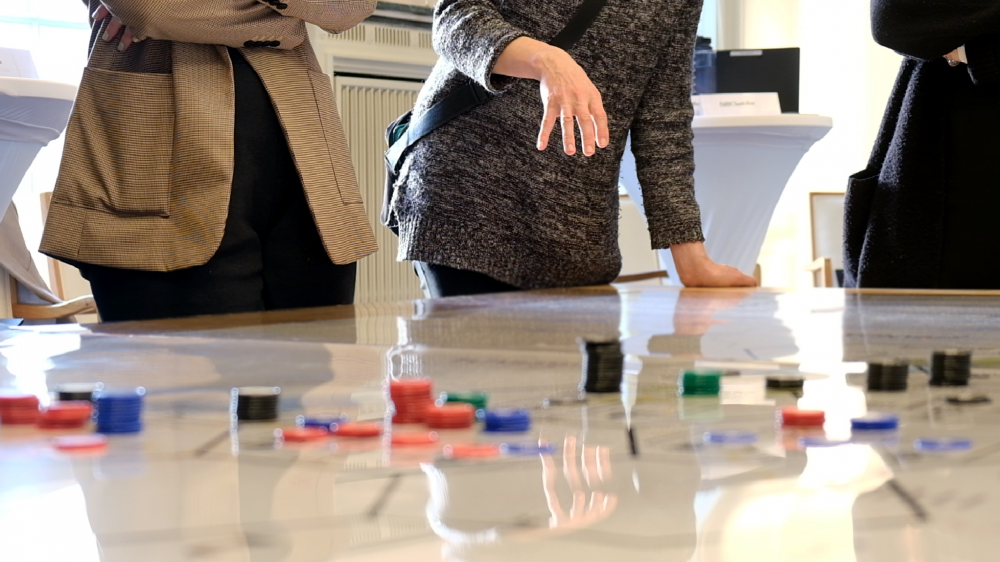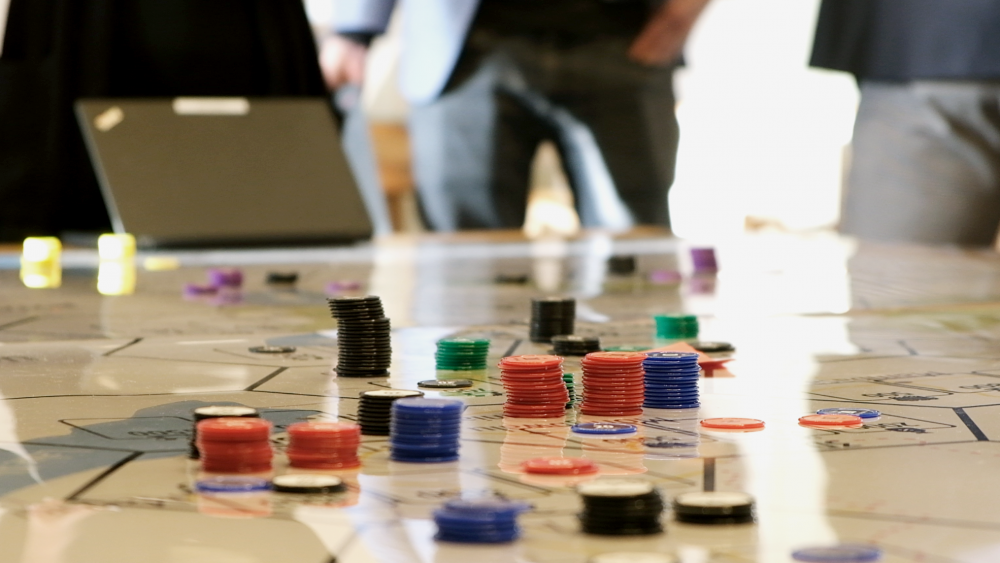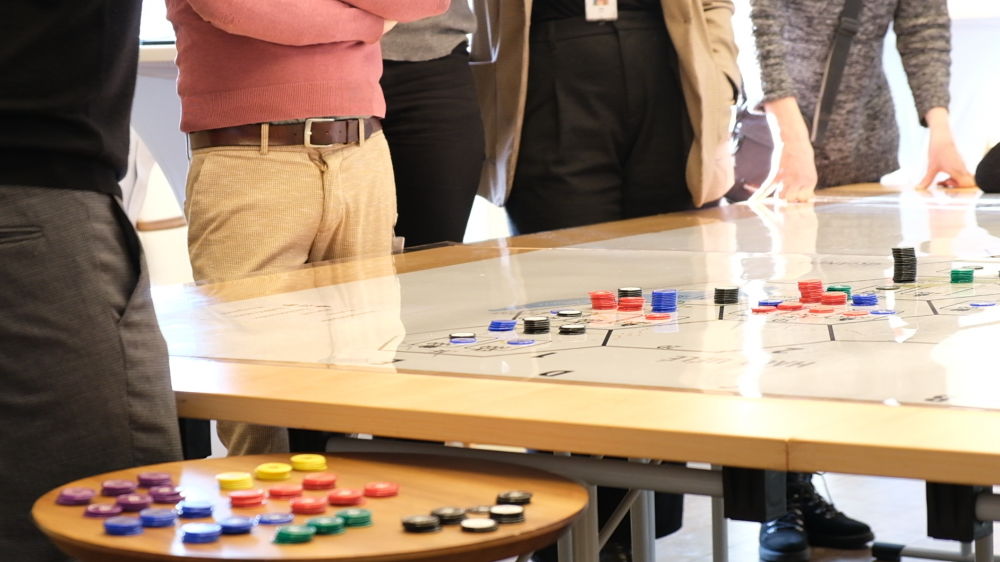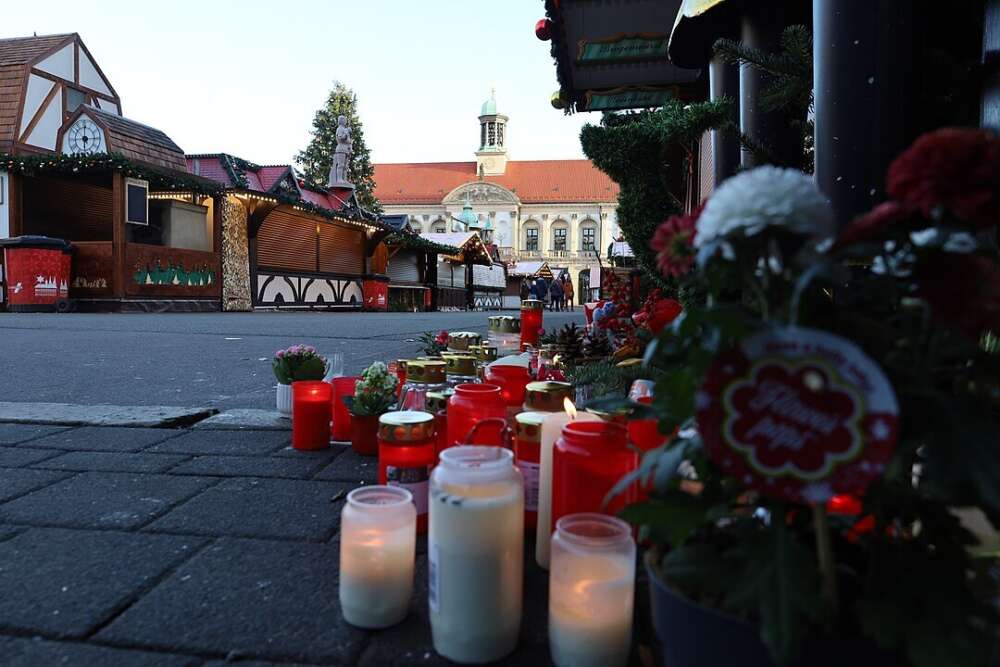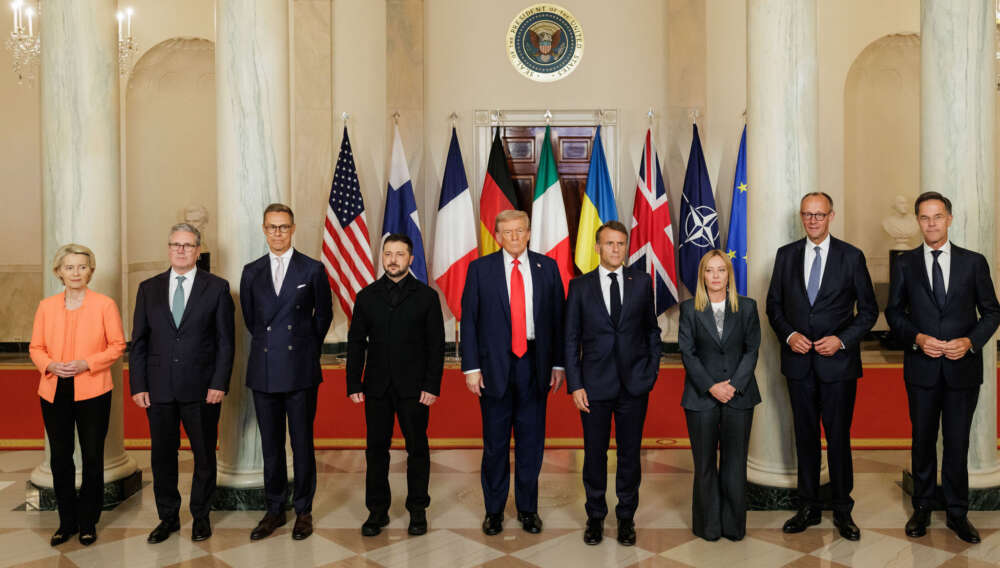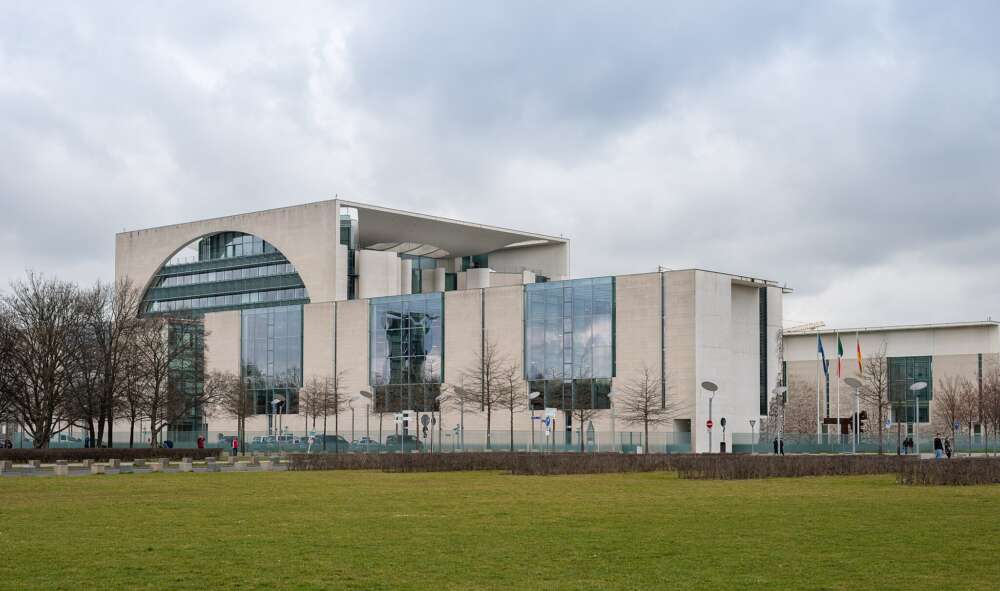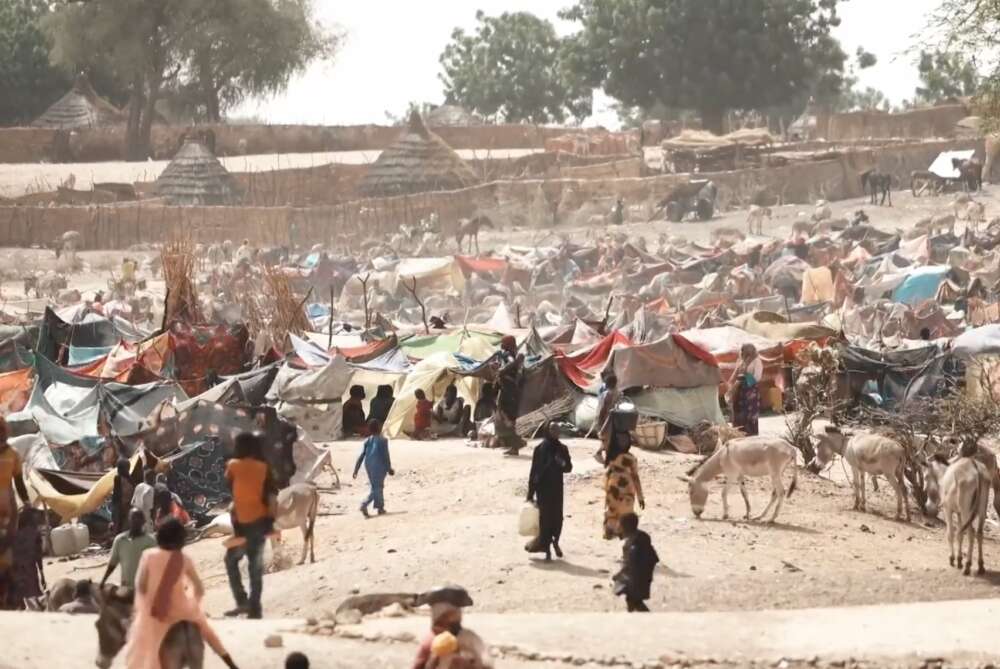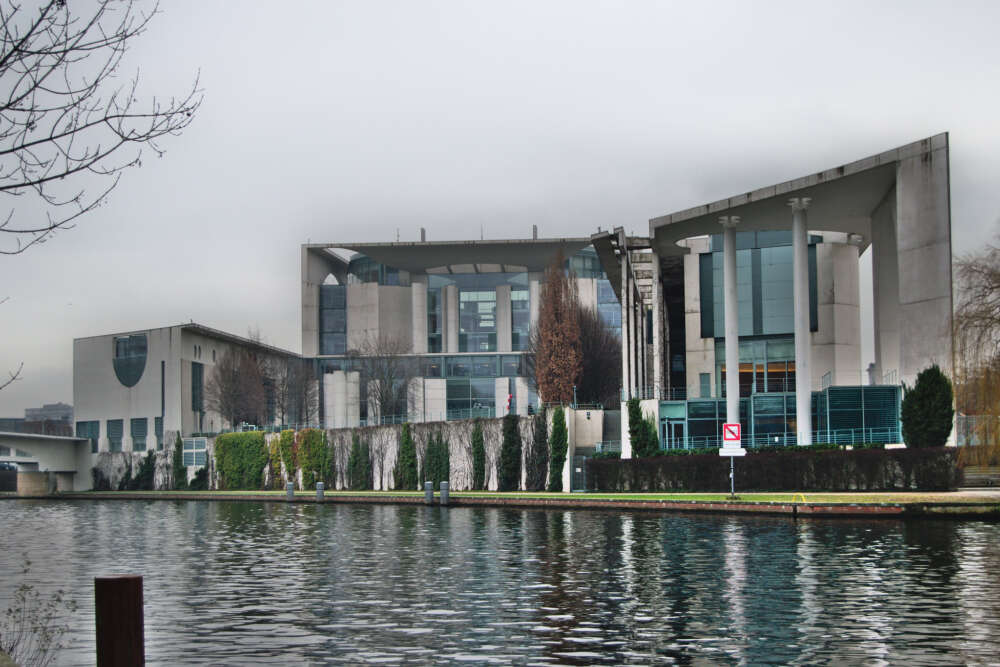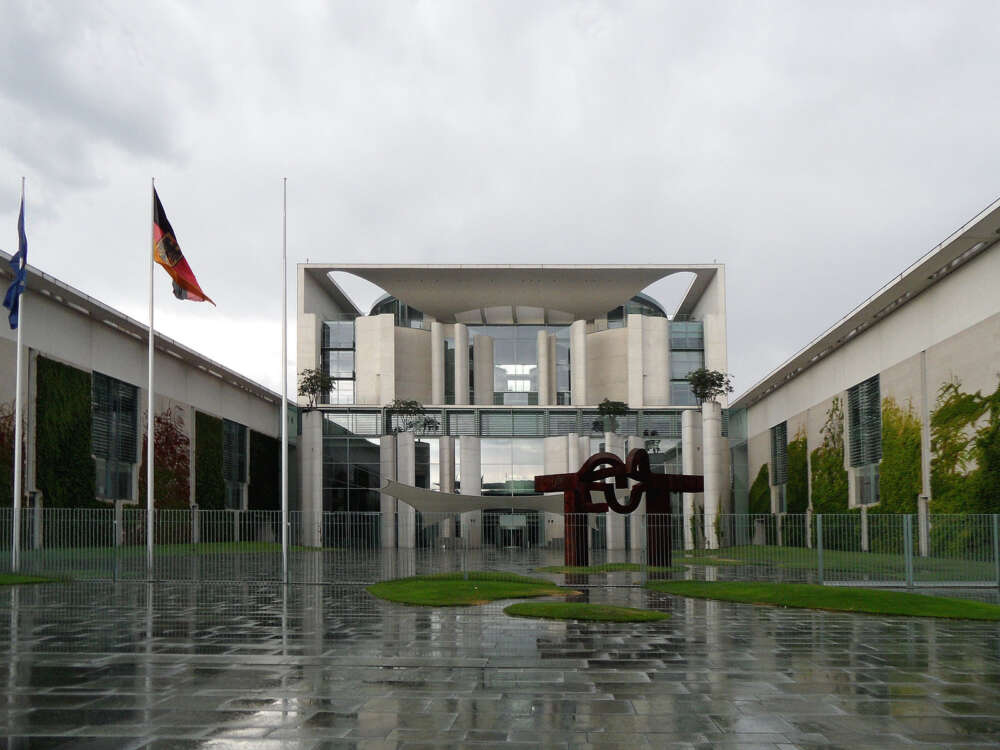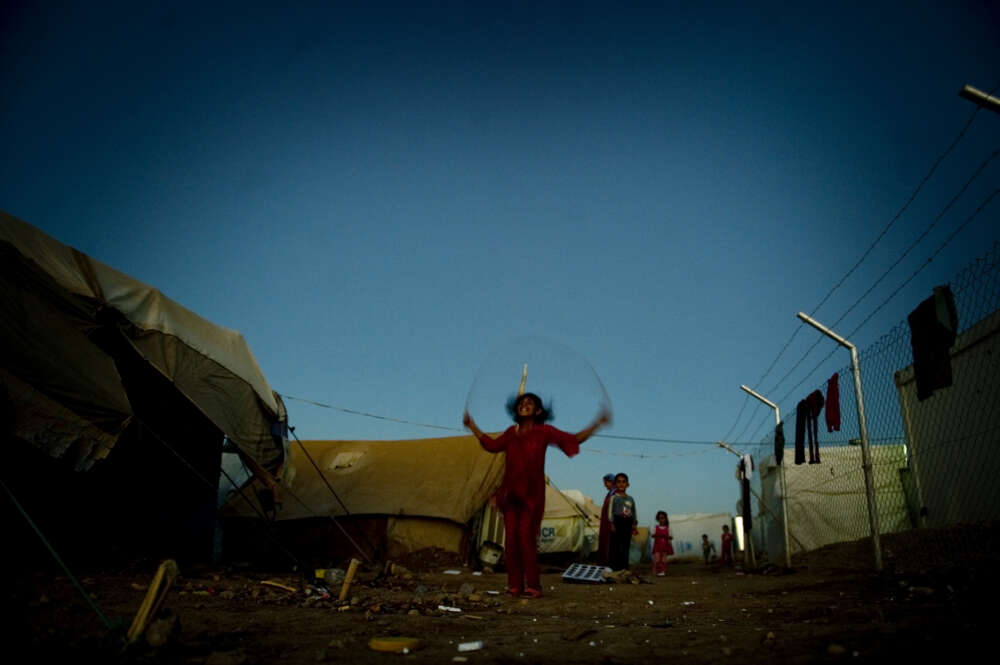Gaming the Political Economy of Conflict
A Practical Guide
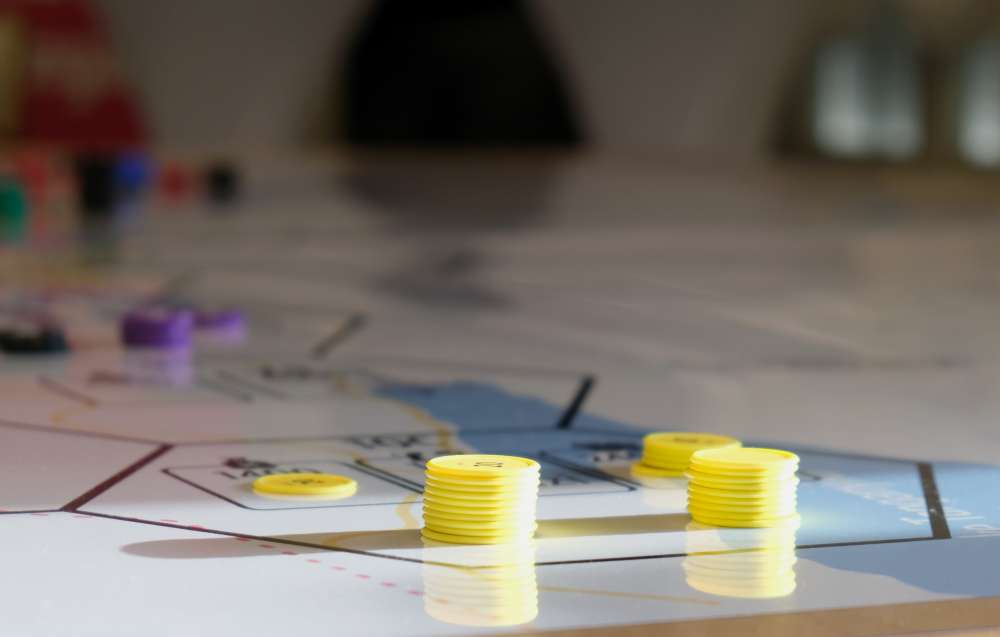
How do economic factors shape the dynamics of violent crises? To launch and sustain their fighting, conflict actors rely on financial resources and access to physical supplies; economic motives may themselves also be an important driver of violence. There is no lack of academic research describing these dynamics, nor of practice-oriented frameworks for grasping how they play out in a given conflict context. Yet there remains a very large step between better contextual understandings and being able to anticipate the concrete consequences of an external intervention.
This is a significant challenge for policymakers as they consider intervening in the political economy of a crisis setting. They have a range of interventions at their disposal, from sanctions regimes to fostering peace-positive investments. But the complexity of conflicts means it is crucial to think through the possible impacts – and unintended consequences – of any potential intervention. This project explored how simulation games can serve as a valuable tool for conducting forward-looking analysis in such contexts. It positioned simulation games at the intersection of political economy analysis and serious games methodologies.
The project’s final publication offers a practical toolbox for developing simulation games tailored to analyzing political economy interventions in stabilization settings, including a step-by-step process and a menu of potential design choices. While these apply to a broad range of settings and themes, the discussion also draws on the project team’s experiences in designing a game on conflict dynamics in the eastern Democratic Republic of Congo (DRC).
Proof of Concept: Gaming Conflict Dynamics in the Eastern DRC
The tabletop exercise was played over three iterations and addressed the political economy of conflict in the eastern DRC, focusing on the impact of external funding for disarmament, demobilization and reintegration efforts (DDR). A group of policy practitioners participated throughout all workshops, culminating in a final one-and-a-half-day workshop that offered space for game developments to unfold over a number of rounds.
The game highlighted key challenges to DDR, as players struggled to commit to demobilization due to the risk that other groups would stay active or even expand their operations. Actors were incentivized to move into spaces from which others retreated as an unintended consequence of the demobilization. Actors also exploited new income sources to reduce the risk of internal defections.
Consequently, actors’ incentives and resulting behavior exemplified various risks – and culminated in a major security dilemma that hindered any substantial demobilization process from gaining traction. These observations fit with existing research on past DDR programs in both the eastern DRC and other contexts, but the game went beyond established findings as it generated concrete hypotheses about actors and situations prone to challenging developments.
A Simplified Map for Gaming Conflict Dynamics
Below is a sanitized excerpt of the map used in our final workshop. While earlier iterations of the game projected a map onto a screen, the final map was printed and laid out on a large table, which allowed tokens representing members of armed groups to be physically moved across the space.
The map shows a highly simplified topography with a hexagonal grid imposed on it. Each hexagonal tile shows different sources of illicit income available to actors in each area (including illicit taxation, roadblocks and resource exploitation). The actual map also included their respective values.
Players also faced constraints regarding the areas in which they could move – reflecting their respective actors’ social base – and the distance they could cover in each round. The map was thus used to visualize key elements for players’ decision-making.
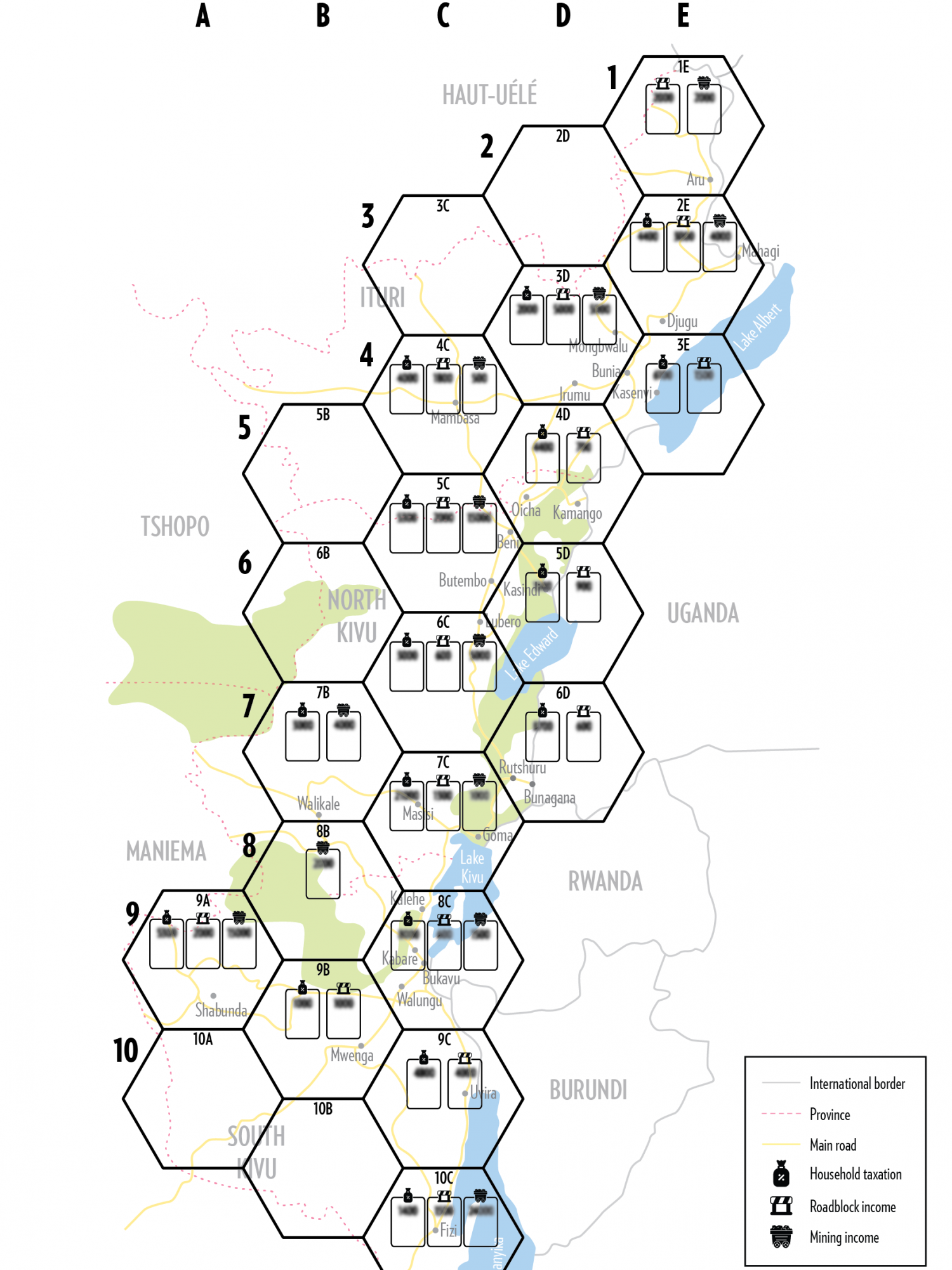
Capturing Developments With a Quantitative Tool
To keep track of developments and inform players’ decisions, the project team created a quantitative tool utilized by players and moderators throughout the game. Players had access to dedicated sheets enabling them to assess how their group’s financial situation would be affected by potential moves, such as obtaining control over a source of income or recruiting new members.
Throughout the game, moderators continuously updated the tool inputs according to players’ decisions, recording key information such as the size and financial capacity of each group, so it could be displayed on a dashboard. The tool also included an indicator to flag potential conflicts over income sources and to adjudicate armed confrontations between actors.
Upon request, the project team is available to further discuss our design and provide additional resources on the tool.
The project is part of the Stabilization Lab funded by the German Federal Foreign Office.
For more information, please contact Gelila Enbaye.

